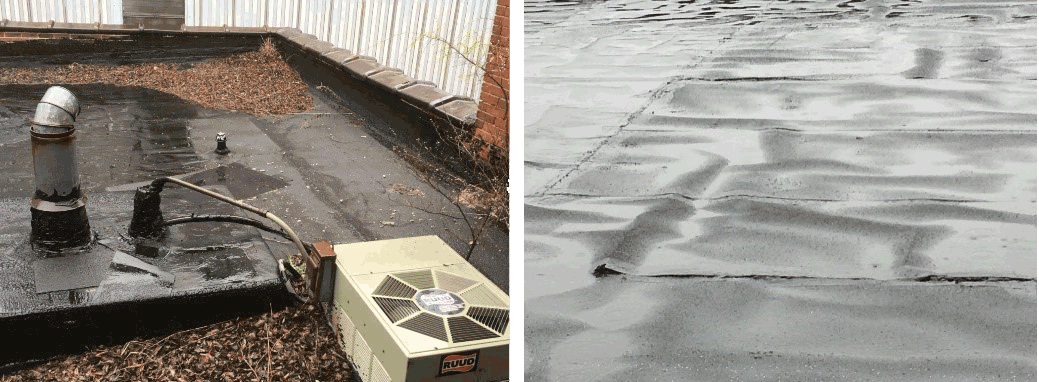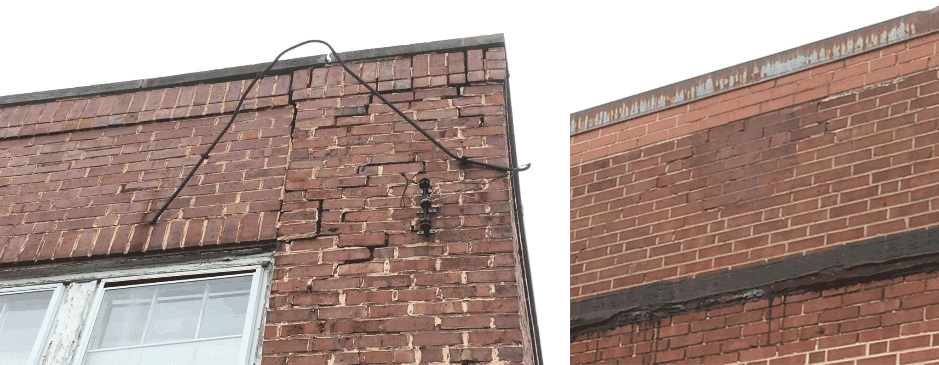IFF’s Real Estate Solutions team works with a wide array of nonprofits that each have unique needs. For the next few months, we’ll be sitting down with Dominic LoGalbo, IFF’s Director of Consulting for Design and Construction, to answer a series of real estate-related questions we’ve gotten throughout the years from our nonprofit clients.
“Buildings don’t heal themselves,” says Dominic LoGalbo, IFF Owner’s Representative Team Manager. “If you notice an issue with your building, it’s better to address it head on, rather than wait until it gets worse.”
Like other members of IFF’s Real Estate Solutions team, LoGalbo works with nonprofits to plan and manage their construction projects. He says many nonprofit groups face serious challenges related to “deferred maintenance” – the postponement of building upkeep – because they’re either unaware that systems need repair, or they lack the funds and staff to manage the projects.
Austin Coming Together, a nonprofit based in Chicago’s Austin neighborhood, worked with IFF on structural repairs to their building. The organization’s executive director, Darnell Shields, spoke about his experiences at an IFF Smarter Spaces panel on May 8th, when nonprofit leaders gathered to discuss the ins-and-outs of facility planning, preparing for a project, and obstacles they encountered along the way. The event was part of a three-part workshop series for grantees of the Polk Bros. Foundation.
“Working with IFF to get a baseline for things needing to be addressed with our facility has been a great guide for the organization,” Shields said. “They were able to lay out what to address and when. As long as you have time to plan for building maintenance issues, you can mitigate the cost.”
LoGalbo agrees that’s sound advice – and offers additional tips for managing deferred maintenance.
Tip #1: Go where people don’t want to go

“If it’s hard to get to, it’s hard to maintain,” LoGalbo says. “That’s why roofs, for example, experience a lot of failures – a lot of times, no one’s going up there to see what’s going on.”
LoGalbo says while people often think of “maintenance” as highly technical in nature, sometimes the action required is relatively simple – for example, regularly removing debris from a roof can prevent leaks. That’s because leaves and other debris left on a roof over time can hold a lot of moisture. Moisture breaks down the roof membrane, which allows water to penetrate inside the building.
Tip #2: Do a regular grounds walk

LEFT: Extreme masonry damage is caused by water penetration from the roof and parapet wall, as well as “lintel jacking” – when the steel member that spans an opening in a wall is exposed to moisture and corrodes. As the steel corrodes, it expands vertically and pushes the masonry upward. RIGHT: The dark spot on the masonry is an example of moisture infiltration into the brick and mortar. Notice how the mortar joints have started to open where the moisture is present. BANNER IMAGE (ABOVE): This is another example of lintel jacking. Evidence of this happening is the stairstep cracking pattern at each end of the window opening.
Chicago is a masonry city. After the Great Chicago Fire of 1871, materials like brick and limestone replaced wood as the preferred building material. Though brick buildings may stand up better against a fire, they are vulnerable to water infiltration if they aren’t maintained.
“When most people see cracks in the masonry, their first thought is that the foundation has settled, but it’s usually because of water infiltration into the masonry,” LoGalbo says. “If you’re a building owner, it’s important to do regular inspections when you notice cracks starting to appear in the masonry, and to get in touch with a licensed mason for repairs.”
Ben Koucherik, General Manager of Chicago Children’s Theatre, says he has created a hyper-awareness for himself regarding deferred maintenance issues at their building.
“I do a grounds walk every morning as I come to work and just look at the spots in the masonry to see how they are maintaining or degrading,” Koucherik says.
Tip #3: Plan for potential building upkeep
“Mission versus money” is often invoked as a way to describe the balancing act many nonprofit leaders face. Building maintenance is also part of that balance. An organization can be strategic about building maintenance by:
- Identifying immediate needs that affect life safety, code violations, and physical damage
- Assessing the remaining life cycle of building systems (electrical, heating/cooling, plumbing, etc.)
- Assessing the remaining life cycle of building envelope (roof, windows, exterior walls, and foundation)
“It’s important for nonprofits to know what they’re up against so they can establish a long-term plan for assessing these issues on a more regular basis, and not just in emergency situations,” says Kate Ansorge, Managing Director of Chicago’s Real Estate Services.
“A common question nonprofit leaders often ask at our workshops is how to fund repairs for deferred maintenance issues,” Ansorge says. “We go over internal sources, including how to size a reserve fund or how construction improvements may be able to increase program space and revenue, as well as external sources like capital campaigns and loans. We want to equip nonprofits with the knowledge and resources they need, so they don’t get in a jam when the roof begins to leak, or their systems begin to fail.
Shields added: “Take advantage of assessments available to nonprofits. What was very helpful for us acquiring our building was the facilities assessment that we were able to take part in through IFF. Bringing in the right professional early on so that you’re not spending more money in the long run is very important.”